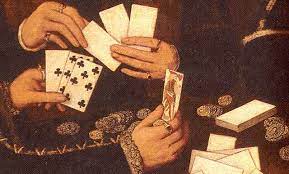
France, renowned for its rich cultural heritage, sophisticated cuisine, and majestic architecture, also has a long and intriguing history with gambling. The allure of games of chance has left an indelible mark on the annals of the French monarchy, from the opulent courts of Versailles to the turbulent times leading up to the French Revolution. Let’s journey through the fascinating history of gambling in the France monarchy.
1. Louis XIV and the Birth of the Royal Casino:
The Sun King, Louis XIV, who reigned from 1643 to 1715, was not only a patron of the arts but also an enthusiast of gambling. He established the first known royal casino within the grounds of the Palace of Versailles. This casino was a haven for the French nobility, offering a luxurious setting for aristocrats to indulge in card games, dice, and other forms of gambling. The opulence of the court was mirrored in the lavish stakes and sumptuous surroundings of the royal casino.
2. Louis XV and the Reign of Lansquenet:
Louis XV, the great-grandson of Louis XIV, continued the tradition of gambling in the French court. His preferred game was lansquenet, a card game that originated in Italy but gained immense popularity in France during the 18th century. The king’s passion for lansquenet extended beyond personal enjoyment; he also actively participated in and promoted the game at court, contributing to its widespread popularity among the French aristocracy.
3. Gambling at Versailles:
The Palace of Versailles, with its grandeur and extravagance, served as the epicenter of gambling during the French monarchy. The courtiers, including royalty, were known for their love of cards and dice, turning the palace into a hub of gaming activity. The Hall of Mirrors, where diplomatic and social events unfolded, also witnessed intense gambling sessions. The stakes were high, and fortunes could be won or lost in a single night.
4. Financial Strain and the French Revolution:
The penchant for gambling among the French monarchy, particularly in the reigns of Louis XIV and Louis XV, contributed to the financial strain faced by the crown. The costs of maintaining the luxurious court, coupled with extravagant gambling debts, played a role in exacerbating the economic troubles that eventually led to the French Revolution. The resentment among the common people towards the monarchy’s lavish lifestyle, fueled in part by gambling excesses, became a contributing factor to the revolutionary fervor.
5. Post-Revolution Gambling:
With the fall of the monarchy and the rise of the French Republic, the dynamics of gambling underwent a significant transformation. Gambling establishments, once exclusive to the aristocracy, became more accessible to the general public. The traditional games played in the royal courts persisted, but the venues and participants diversified. The monarchy’s demise marked a democratization of gambling in France, as casinos and gaming houses catered to a broader spectrum of society.
6. Napoleon Bonaparte and the Return of Gambling:
Napoleon Bonaparte, despite his revolutionary background, had a pragmatic approach to gambling. Recognizing its revenue potential, he authorized and regulated casinos, seeking to capitalize on the popularity of gaming. Under his rule, casinos flourished, and gambling once again became an integral part of French social life.
Conclusion:
The history of gambling in the French monarchy is a captivating journey through the corridors of power, decadence, and societal transformation. From the royal casino at Versailles to the lansquenet tables of Louis XV, gambling was woven into the fabric of French courtly life. The financial repercussions of these gambling pursuits, combined with other factors, played a role in the downfall of the monarchy. Yet, the legacy of gambling endured, adapting to the changing political landscape and leaving an enduring imprint on the cultural history of France.
